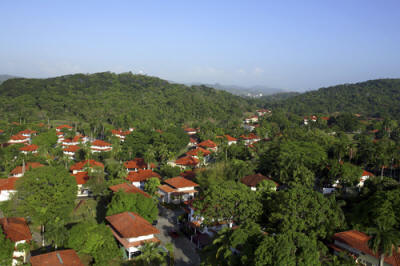
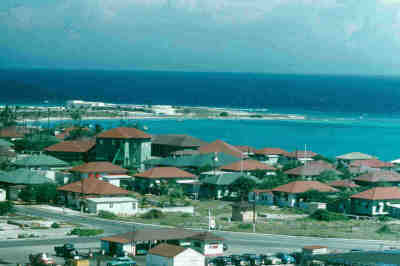
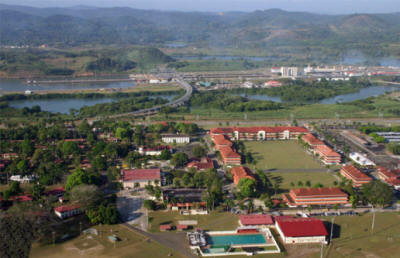
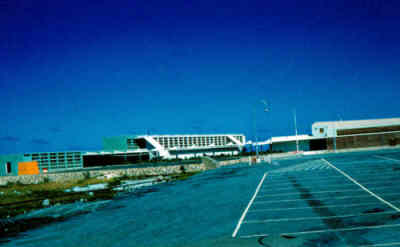
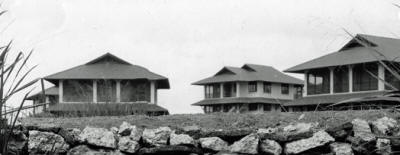
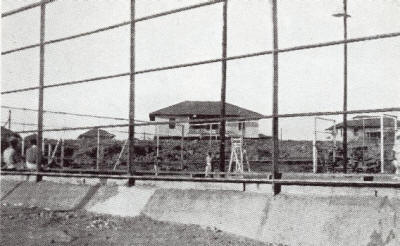
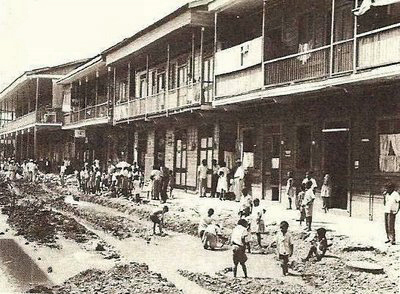
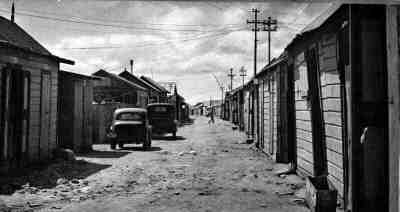
|
WAS THE LAGO FACILITY MODELED AFTER THE CANAL ZONE? |
| WRITTEN DECEMBER 24, 2011 BY DAN JENSEN |
|
I have just finished reading The Path Between the Seas: The Creation of the Panama Canal, 1870-1914 by David McCullough. |
|
What struck me the most about the book was the similarity between the amenities provided by the Cannel Company and Esso for what were called the Gold in Panama and the Esso or Foreign Staff payroll in Aruba and the Silver as they were called in Panama or the Lago or Local payroll in Aruba. As I read about the social makeup of the two groups and what the company provided for each it sounded like what had been done in Panama in the early 1900’s was copied in Aruba in the late 1930’s. |
|
The Aruba undertaking was not as large or as challenging as the canal project but the provisions for employees as well as the makeup of the work force were identical. |
|
In Panama, as in Aruba in the early days, the local labor force was made up of blacks imported from the British West Indian islands. The same had been true in Panama, Panamanian natives and Indians were not hired and a lot of this had to do with the languish barrier, the Americans could not speak the native languish or Spanish, so in order to be understood they imported Blacks who spoke English. However, as McCullough’s book points out, the Panamanian’s were considered lazy and ill fit to work and I am pretty sure the same feeling prevailed about the Arubans when the Americans first arrived in Aruba. The Arubans, for the most part spoke Papiamento and Dutch and none of the Americans spoke these languages. The Arubans had been primarily fishermen and Aloe planters and were probably not skilled labor. Again, Esso, as the Canal Company solved this problem by importing a black labor force from the British islands. |
|
In Panama housing, clubs, churches and water and sanitation, such as garbage collection were provided for the American workforce but not the Silver (Black West Indian) work force. The canal company did provide commissaries for both the Gold and Silver, but they were segregated and the Silver could not shop in the Gold commissaries. As for the hospitals, all employees were given free medical care and the Gold and Silver used the same hospitals but there were different wings or wards within the hospital buildings for the Gold and the Silver employees. The same was true in Aruba, the Foreign Staff had their own commissary and the Locals had the use of another commissary, both staffed and supplied by the company, and as in Panama, the Locals could not come and shop at the Foreign Staff commissary. The hospital in Aruba was used by both the Locals and Foreign Staff, but again as in Panama, there was a wing for the locals and a wing for the Foreign Staff. |
|
In Panama the American employees were paid in gold and the West Indian and other local hire were paid in silver; thus the names The Gold Employees (American) and The Silver Employees (West Indians and local hire). In Aruba it was the Esso or Foreign Staff payroll and these employees were paid in US dollars, and for the most part were Americans. The Lago or Local payroll was paid in Dutch Guilders and was made up of West Indians and other local hires. |
|
In Panama the Gold employees could live in the Canal Zone and were provided housing, clubs and churches built and staffed by the canal company. The Silver employees lived outside the zone and had no housing, clubs or churches provided by the company. The same was true in Aruba, Foreign Staff lived in The Colony and were provided with clubs, and sport facilities as well as housing. No local hire were permitted to use any of these facilities. |
|
It would be interesting to know if at the time the refinery in Aruba and the colony was being planned if former employees of the Canal Company were involved or consulted. The similarities are just too much alike to be a coincidence. |
|
Today I can see how segregated and pampered the Foreign Staff employees were as compared to the Local hires. At the time this did not even enter into my mind, it was just the way things were. |
|
In McCullough’s book he points out that the Canal Company had to entice skilled Americans to come to Panama to work. In the beginning things were very primitive and living was hard but when it improved it became a paradise and most Americans who came stayed to finish the job. |
|
I think the same may have been true in Aruba, in the early years life was primitive, the man lived in what were know as the Sheep Sheds, there was no ice, and all the food came in cans. But when it began to improve it do so greatly and those who were there stayed. |
|
I would be grateful for your thoughts on the subject. |
|
Below are photos from the Canal Zone in Panama and also from Lago Colony in Aruba. Remember that Panama was a wet jungle climate where as Aruba was a dry arid climate. Still the similarities are striking. |
| CANAL ZONE | LAGO COLONY |
 |
 |
| GOLD EMPLOYEE HOUSING | FOREIGN STAFF HOUSING |
 |
 |
| SCHOOL | SCHOOL |
 |
 |
| GOLD EMPLOYEE HOUSING | FOREIGN STAFF HOUSING |
 |
 |
| SILVER EMPLOYEE HOUSING | LOCAL EMPLOYEE HOUSING |
| RETURN TO THE LAGO COLONY DIRECTORY |